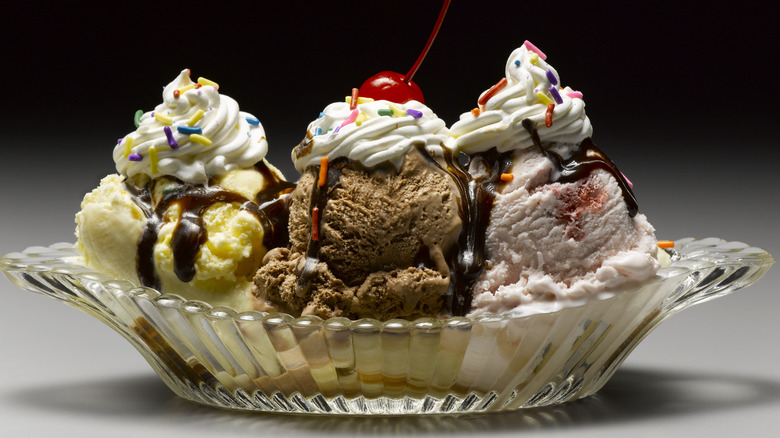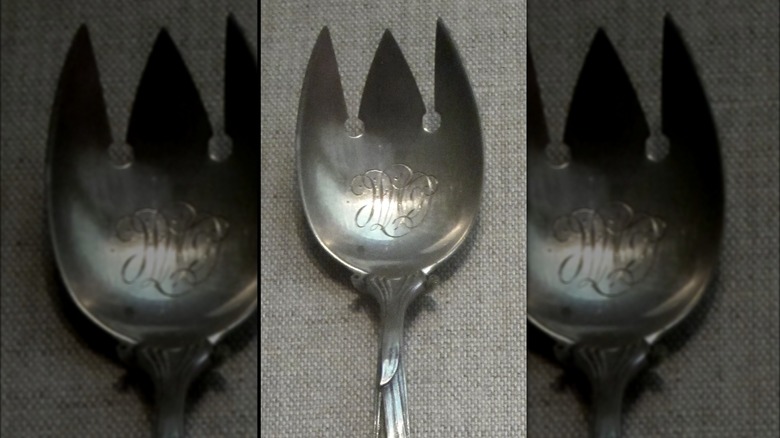The Victorian Era Fork That Used To Rule Ice Cream Eating
Anyone familiar with Victorian-era England knows that the Victorians never passed up an opportunity to demonstrate how wealthy they were. This cultural paradigm is particularly evident in their obsession with elegant table settings and posh manners. Throughout the era, glasses, plates, and silverware became increasingly specialized, as did mealtime etiquette. Dinner guests were expected to understand how and when to use such utensils as grape scissors and aspic spoons, and no one batted an eye upon seeing their ice cream served with a fork.
With some resemblance to a modern spork, the Victorian ice cream fork featured a short, shallow bowl with three or four tines snipped into the edge. Though today, we enjoy our ice cream with a spoon (sometimes directly from the container), the Victorians used these specialized forks to neatly pierce and scoop their ice cream. This way, there was no need to chase that last bite of frozen goodness across the bottom of your bowl — which, of course, would have been quite undignified.
As ice cream became a mainstay of Victorian-era desserts, the ice cream fork became a standard part of most silverware sets. These forks varied in style and ornateness according to the owner's taste. The tines would have varied in length and number, and the handle would have been designed to match other utensils in the set. However, the bowl on these forks tended to be rather shallow, as they were holding something semi-solid rather than liquid.
Which came first, the ice cream or the fork?
Though ice cream made its debut in England around 1665, it remained a rare luxury until about 200 years later. In 1857, Carlo Gatti — an enterprising ice cream maker from Italy — built ice warehouses capable of storing enough ice to make him the largest ice supplier at the time. Coupled with the invention of the first portable ice cream maker, called a "sorbetiere," this meant wealthy London citizens with private ice houses could make ice cream at home. In fact, this was the safest way to consume ice cream, as street vendors weren't held to the same standards as today's popular ice cream chains.
Making ice cream in-house also gave the Victorians plenty of opportunities to impress their guests. In these wealthy homes, ice cream might have been frozen inside a pewter ice cream mold shaped like a pineapple, lobster, or other opulent shapes. They were also creative when it came to ice cream flavors, from pineapple and pistachio to pine nut and artichoke. To get a taste of this experience at home, you might try making one of these unusual flavors with our easy homemade no-churn ice cream. You can even enjoy it with an ice cream fork, as some silverware manufacturers still make them today.

